Wheelchair hubs offer a bit more flair than other components because you can choose between different styles, such as fiber three-spokes, aluminum spinners, or fiber spokes.
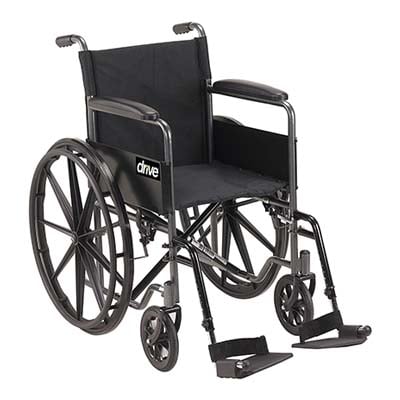
No matter how trendy you want to get with your wheels, one thing is certain- the hubs need to be compatible with the rest of the chair.
Sure, you want to express yourself, but it’s important to understand how to measure the hub width before you fall head over heels for a head-turning hub setup. We break it down for you in this guide!
What is a Wheelchair Wheel Hub?
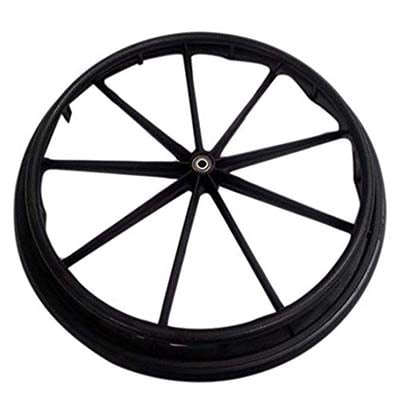
Let’s start with the basics. A wheel hub is located in the center of each wheel, where the spokes are connected to the rim. The hub plays a pivotal role in the overall functionality of the chair because it houses the axel.
Wheelchair wheel hubs cost anywhere between $450 to $1,200. Learn how to take proper measurements of the wheelchair base before you beeline it for the hottest new set, so you can make the best choice for your needs and avoid issues down the road.
A Quick Overview About Spokes
As you know, the spokes connect to the hubs. Many types of spokes are not just about looks but affect wheelchair performance in various ways. Let’s take a look!
- Cross pattern metal spokes: The cross pattern of these spokes makes the wheels incredibly durable, and they’re also the most affordable. This is the rear wheel of choice for many users.
- Radial spokes: These spokes are lighter than cross pattern spokes due to less material used for lacing, therefore they’re lighter. This type of spoke is easy to maintain and great for sports because they weigh less, but you sacrifice durability.
- Lightweight/ultra-lightweight spokes: As you can guess, these weigh even less than radial or cross pattern spokes, making them ideal for easy portability but less durable and more expensive.
- Mag wheel spokes: While the strength and durability of these spokes are reinforced with thicker material, they are heavier. This is an ideal option for caregivers because mag wheels are easy to clean.
Now you have a solid understanding of hubs and spokes, it’s time to learn about hub width.
Understanding Hub Width
When you install the rear wheels on your chair, a quick-release axle button allows you to slide the axle into the receiver sleeve located on the frame.
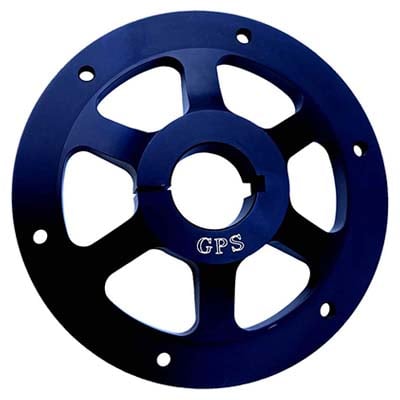
These components (the axle, receiver sleeve, and hub) are called interfacing components.
The dimensions for the three interfacing components must coincide for proper engagement on the wheelchair.
Let’s look at an example. Say that a chair has an existing hub width of 2” and a receiver sleeve that’s 2” deep. That means the quick-release axle must be 4” to pass through the hub and sleeve, thus locking securely into place.
The components won’t lock into place if the dimensions are off, and you’ll have an unsteady wheelchair. The easiest way to ensure the dimensions are always accurate is by establishing the hub width.
The hub width is a crucial measurement that must always be checked and maintained to ensure the safest and highest wheelchair performance.
Hub sizes are narrow and wide, with the most common width measurement sitting somewhere between 1.8” to 2.06”. Wider hubs range between 2.23” to 2.31”.
If your new hubs sport a different width than the existing set, note that replacing the axle length is recommended to ensure proper engagement.
How to Measure Hub Width
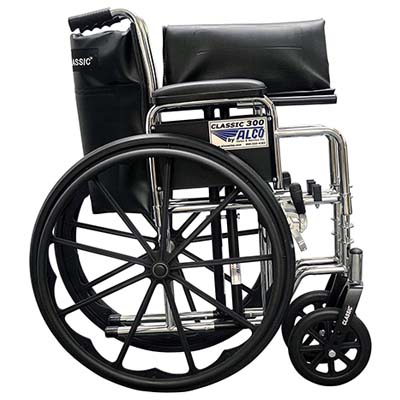
Before choosing your hubs, it’s vital to measure the hub width to avoid the risk of axle disengagement while the wheelchair is in use. Fortunately, it’s an easy task that you can do yourself.
Determine the width of your existing hub by first removing the wheel from the chair and locating the point where the axle protrudes out the rear of the wheel against the bearing. Mark this point, then proceed to remove the axle.
Now you can measure using a ruler or basic tape measure. Start at the mark you made, going to the inside of the adjustment nut. This measurement is the hub width.
Here’s how to determine if the measurement is correct. Say your hub measures around 2”, and there is sufficient thread on the quick-release axle adjustment mechanism. In this scenario, a narrow 1.87″ to 2.06″ hub should work perfectly.
However, if the hub width is slightly greater at around 2.25”, you’ll want to go for a wider hub that falls within the 2.23″ to 2.31″ range.
Measuring the Axle Length
Sometimes a wheelchair user measures the hub width and discovers the width differs from that of the overall wheelset configuration. If that happens, you may need a new quick-release axle with an accurate length.
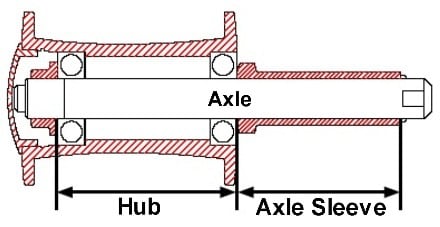
To determine the best length, first, measure the width of the new hub and the depth of the axle sleeve. The cumulative length of these two components gives you the approximate axle length.
Axle Length Equation:
Hub Width + Axle Sleeve Depth = Axle Engagement Distance (+ tolerance)
Determining the Engagement Length
The engagement length refers to the distance between the adjustment nut and the detent balls found on the quick-release axle length.
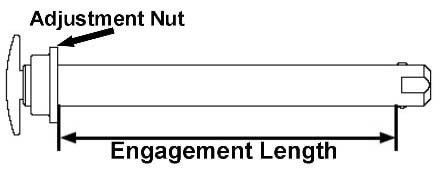
When shopping for this component, note that most online retailers will display the overall axle length that measures the distance from the detent balls to the top of the threads.
However, if you’re shopping online, always double-check the measurements yourself. Not only does this help you better understand how the retailer measures, but you can also apply those standards to your own needs.
For engagement length, use this simple equation:
After measuring the hub width, take the increase or decrease amount and correlate it to your axle to determine the new axle length.
Here’s an example. If your existing hub width is 2” and the existing axle length is 4.5”, a new hub width of 2.25” determines a new axle length of 4.75”.
Final Thoughts on Wheelchair Hubs
Figuring out how to choose wheelchair hubs can seem confusing at first, but if you learn how to take the right measurements yourself then you can save yourself a lot of trouble down the road regarding how your wheel system functions.
The main point of focus is the hub width. Once you establish this, along with the axle and engagement length, then you can ensure that all-wheel components will fit together as they should.
Then, you can go wild expressing yourself with a hot set of hubs and spokes, while having the peace of mind that your wheelchair is performing at its best!
Resources & References:
- Wheelchair Maintenance & Minor Repairs, sci.washington.edu
- Comparison of Wheelchair Wheels, rehab.research.va.gov